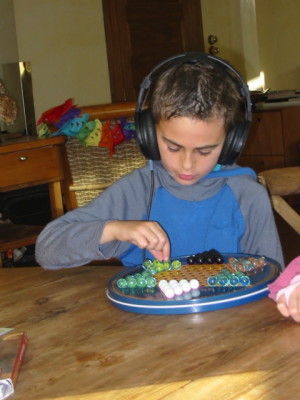The development of reading and writing as a means to communicate, started only ten thousand years ago. This isn’t that long from an evolutionary perspective. There are three sections in the left hemisphere of the brain that need to work together well in order to automate the process of recognising and analysing words. One of these sections (situated in the left inferior frontal gyrus) helps a person to vocalise words (silently or out loud) and then analyse them in small parts, into phonemes.
Dyslexic children tend to lean more heavily on these early stages of phoneme recognition. They need time and repetition to stimulate the connection to the language centres in the left hemisphere of the brain.
They are certainly not ‘dumber’, just different to the rest of their classmates, who might breeze through this phase. That’s frustrating, to say the least, and, depending on their temperament, the child may then either dream away or become frustrated.
Listening Training will assist with the creation and strengthening of neural pathways which will help decipher, as well as add context to, what’s being read and written. It is a profound yet gentle way of enabling better access to all these different realms in the brain. And it happens all of its own accord, without intensive therapy.

Listening And Reading
Eyes and ears work together while we read. Our eyes move from letter to letter, and later from word to word, while the vestibular system coordinates this synchronicity of eyes and ears. Doing listening training reduces possible delays in communication between these senses, and improves neurological timing.
Listening And Learning
It’s in the cochlea (the spiral-shaped bone in the inner ear ) where sound is converted into electrical impulses that the brain will then interpret. If that process isn’t optimal we may have a hard time discerning certain consonants – P vs B, or T vs D for instance. Listening Training improves this discerning ability.
A further example of what can be at stake: the neurons that process sound generally have about a thirty milliseconds breaks before firing again for the next sound. For some hearing deficient people that break can take at least three times that long, which means that these people lose a lot of information.They are not ‘deaf’ but just cannot hear the beginning of a syllable, or the sound change within the syllable.
Needless to say that a lack of accurate perception leads to weaknesses in all the language tasks, from vocabulary, to reading, writing and comprehension. That is why it is so important to be aware of this and try and remedy this early on before kids lose their self-confidence. There may be many more issues that play a role, things that we still need to uncover but from what know so far: Listening Training helps!


